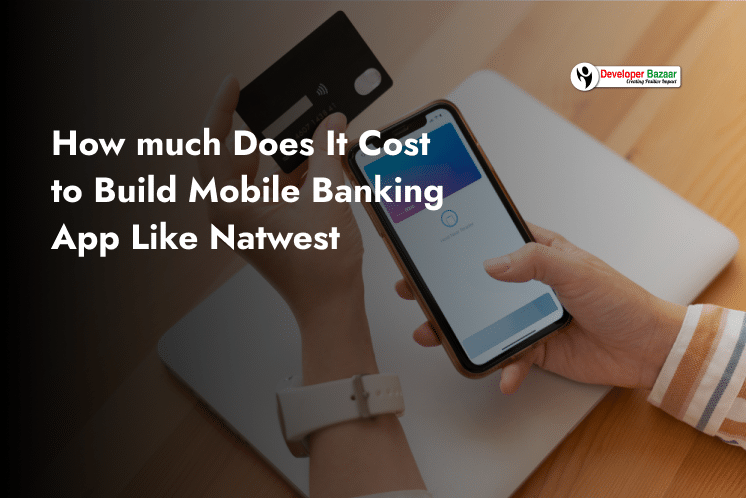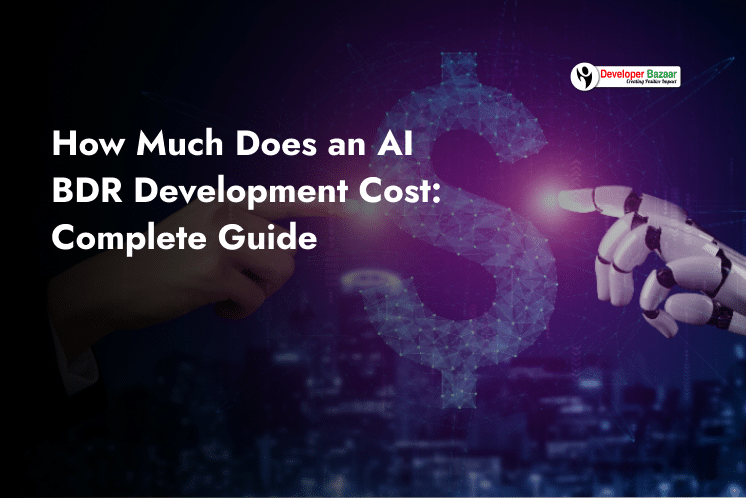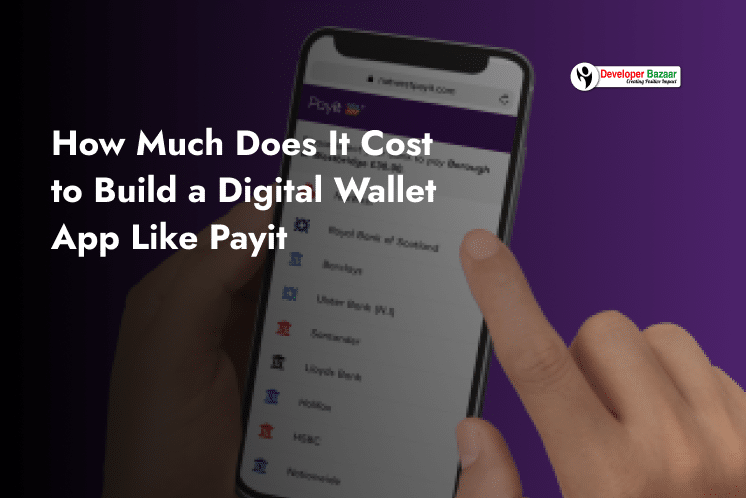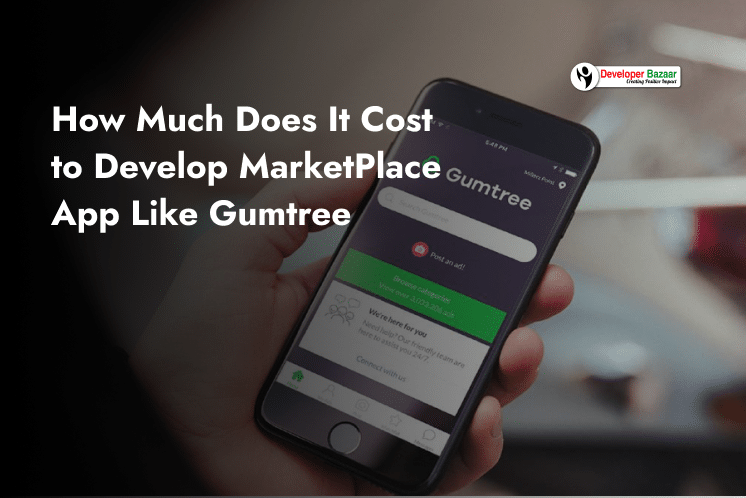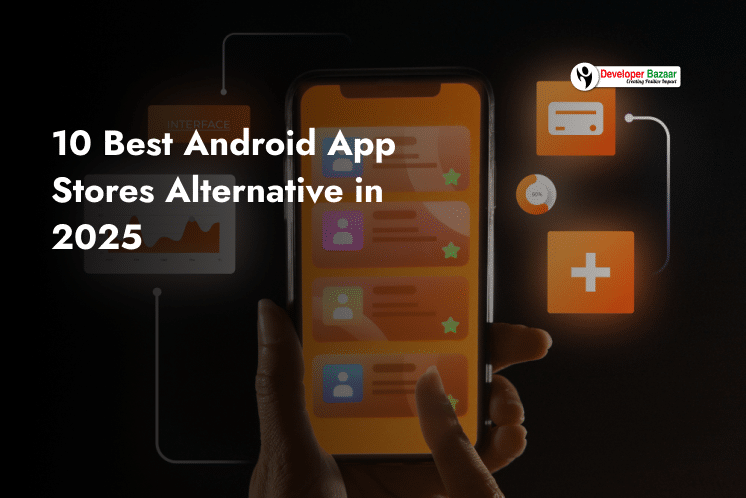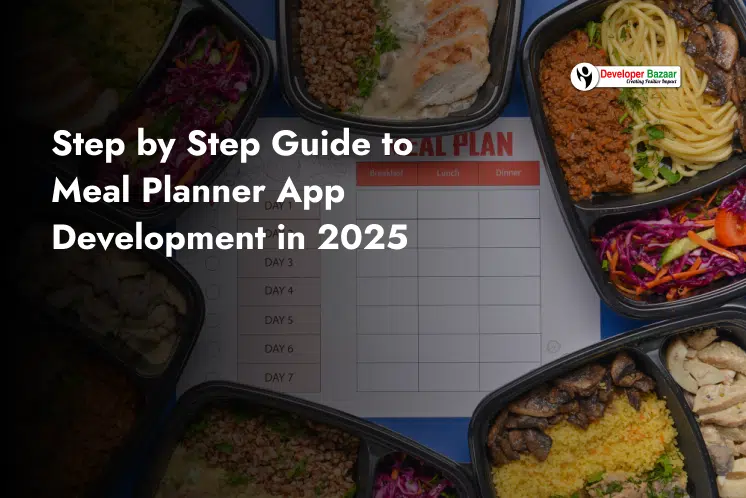Table of Contents
ToggleDeveloping a HIPAA compliant app in 2025 is essential for protecting patient data and following legal regulations. With the rise in healthcare data breaches, companies must focus on security and compliance. A healthcare app development company needs to follow strict HIPAA guidelines to build safe and reliable apps.
This article will help you understand the key steps to develop a HIPAA compliant app. We will cover best practices, security measures, and compliance requirements. Whether you are working on medical app development or improving an existing app, this guide will make the process easier.
What is HIPAA and Why is It Important?
HIPAA (Health Insurance Portability and Accountability Act) is a law that protects patient data. It was introduced in 1996 and has been updated over the years to improve security rules.
HIPAA compliance is essential for any healthcare app that handles patient information. It guarantees the privacy and security of sensitive data.
For any healthcare app development company, following HIPAA rules is a must. These rules include:
- Privacy Rule - Protects patient information.
- Security Rule - Ensures digital data is safe.
- Enforcement Rule - Defines penalties for violations.
- Omnibus Rule - Expands HIPAA to business associates.
- Breach Notification Rule - Requires reporting of data breaches.
If a medical app development company fails to follow HIPAA rules, it can face serious fines. More importantly, it can lose patient trust. That’s why HIPAA compliant app development in 2025 is more important than ever.
HIPAA Compliance: What Does It Mean for Healthcare App Developers?
Developing a HIPAA compliant app means following strict security and privacy measures. Healthcare apps must protect patient information at all levels.
HIPAA defines three types of security safeguards:
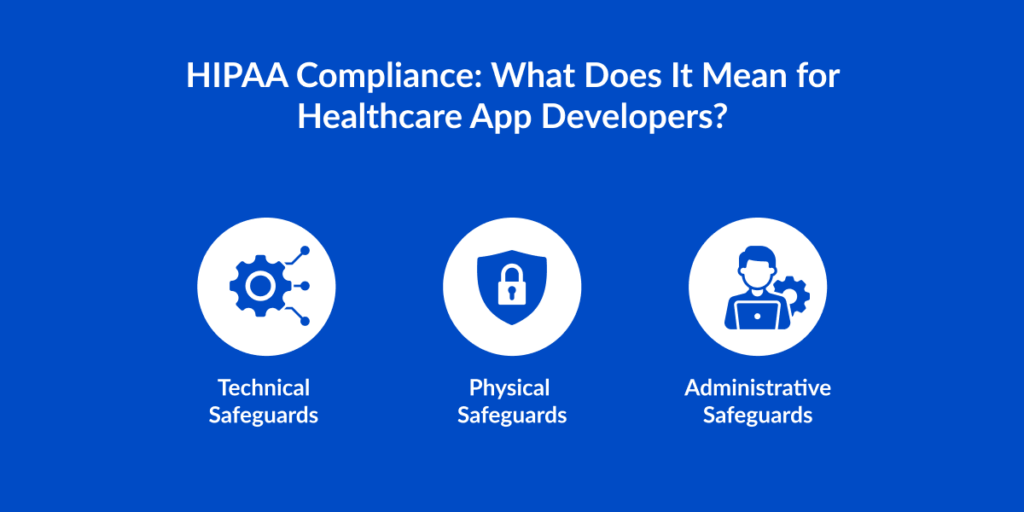
1. Technical Safeguards
Use encryption, secure servers, and authentication methods. This means all patient data should be encrypted before storing or sharing. Secure servers ensure hackers cannot access information. Authentication methods like passwords or biometric logins help verify user identity.
2. Physical Safeguards
Limit access to servers and devices storing patient data. Only authorized people should have access to physical systems like computers and data centers. Hospitals and clinics must have security controls, such as restricted areas and surveillance, to protect sensitive information.
3. Administrative Safeguards
Train employees and set privacy policies. Healthcare staff should be trained on how to handle patient data securely. Companies need clear policies to ensure compliance. Regular audits and checks help prevent mistakes and security risks.
If you are a healthcare app development company, you need to focus on these safeguards. Developers must ensure secure data storage, encrypted communication, and proper user authentication. A medical app development team that understands HIPAA can help businesses stay compliant.
Building a HIPAA compliant app in 2025 is not just about meeting regulations. It’s about creating secure, trustworthy apps that protect patient data and enhance healthcare services.
HIPAA Compliance Software Requirements for 2025: 5 Main Rules
When you build a HIPAA compliant app, it must follow strict rules to protect patient data.
These rules ensure that personal health information (PHI) remains secure, private, and accessible only to authorized users.
Below are the five key rules for HIPAA compliances in app development in 2025.
1. Privacy Rule
This rule defines how patient health data is handled. Patients have the right to access their records, and organizations must get their consent before sharing data. A privacy officer should be appointed to oversee compliance and manage policies.
2. Security Rule
This rule ensures PHI is protected from unauthorized access. It requires strong encryption, access controls, and monitoring systems. A mobile app development company must also implement training programs for employees to prevent security breaches.
3. Breach Notification Rule
If a data breach happens, affected patients must be informed within 60 days. Large breaches (500+ individuals) require public notifications and reports to government agencies. Business associates handling data must also follow the same rules.
4. Omnibus Rule
This rule holds companies accountable for following HIPAA regulations. Regular audits and risk assessments are required. If violations occur, corrective measures must be taken. Penalties depend on the level of negligence.
5. Enforcement Rule
This rule sets penalties for HIPAA violations. Businesses must follow strict data protection laws, restrict marketing use of PHI, and sign agreements with third-party vendors to ensure compliance. Failure to obey these guidelines may result in severe penalties.
Following these rules is essential for any medical app development or fitness app development project in 2025. It helps companies stay compliant, build trust with users, and avoid legal risks.
7 Steps to Make Your Healthcare App HIPAA-compliant for 2025
To build a HIPAA compliant app, developers need to focus on security, encryption, and strict access management. Ensuring compliance helps protect patient data, prevents breaches, and avoids legal risks.
Below are mentioned steps about how you can make your healthcare or fitness app development fully HIPAA compliant.
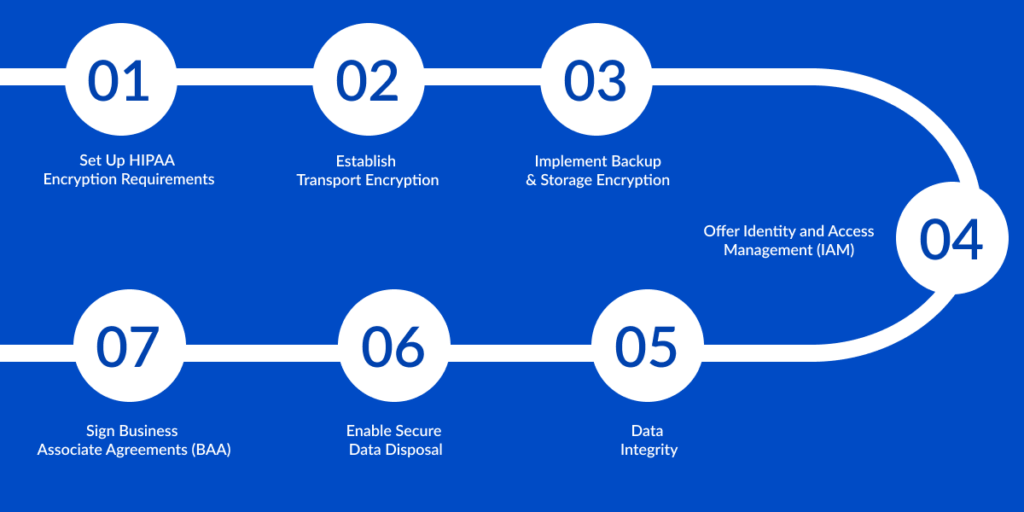
1. Set Up HIPAA Encryption Requirements
Encryption is the foundation of HIPAA compliant app development. Any data stored or transmitted must be encrypted using strong methods like AES (Advanced Encryption Standard) and SSL (Secure Sockets Layer).
This makes sure sensitive health information remains protected from unauthorized access. Without proper encryption, data can be intercepted, leading to security risks.
2. Establish Transport Encryption
Health data is often transmitted between users, cloud servers, and healthcare providers. To prevent exposure, it must be encrypted before transmission. Using secure protocols like HTTPS and TLS (Transport Layer Security) helps ensure data stays confidential.
Cloud storage providers must also support HIPAA-compliant encryption methods to prevent data leaks. Regular testing and updates are necessary to keep encryption standards up to date.
3. Implement Backup & Storage Encryption
Data backups are essential to prevent information loss due to system failures or cyberattacks. These backups must also be encrypted using strong security protocols.
If healthcare data is stored in cloud environments like AWS, Google Cloud, or Microsoft Azure, it should remain protected even outside an organization’s direct control. A well-secured backup system ensures business continuity without compromising patient privacy.
4. Offer Identity and Access Management (IAM) that is secure.
Controlling who has access to patient data is essential for developing HIPAA-compliant apps. Only authorized users should have access. Using two-factor authentication (2FA), biometric authentication, and role-based access ensures that only verified personnel can view or modify sensitive data.
Logging and tracking all user activities help detect unauthorized attempts and potential security threats. Secure identity management helps prevent data breaches and ensures compliance with HIPAA regulations.
5. Data Integrity
Health records must remain accurate and unaltered. Unauthorized changes can compromise patient care and lead to compliance violations. To ensure data integrity, systems should include security measures that detect any unauthorized modifications.
Digital signatures, SSL certificates, and verification protocols can help maintain data consistency. Regular audits and monitoring can further strengthen security by identifying potential risks before they become major issues.
6. Enable Secure Data Disposal
HIPAA compliance in app development also includes the proper disposal of old or unused data. Any PHI (Protected Health Information) that is no longer required must be deleted securely to prevent unauthorized access.
This applies to backups, stored files, and decryption keys. Proper data disposal policies ensure that sensitive information does not fall into the wrong hands, reducing long-term security risks.
7. Sign Business Associate Agreements (BAA)
If your app relies on third-party vendors or cloud service providers to store or process PHI, they must sign a Business Associate Agreement (BAA). This legal contract ensures that all parties follow HIPAA regulations and handle data securely.
Choosing a trusted, HIPAA-compliant cloud provider like AWS, Google Cloud, or Microsoft Azure is a safer approach. A BAA ensures that all external services involved in your app’s operations meet strict compliance requirements.
Following these steps ensures that your healthcare or medical app development remains secure and fully compliant with HIPAA regulations. The cost to develop a HIPAA compliant app varies depending on security features, data encryption methods, and third-party integrations.
However, investing in strong security measures helps protect patient data and reduces legal risks for any mobile app development company.
How Much Does it Cost to Develop a HIPAA-Compliant App?
The cost to develop a HIPAA-compliant app depends on the app’s features, complexity, and compliance requirements. Different medical app development projects have different budgets, but here’s a general estimate:
| App Type | Estimated Cost Range |
|---|---|
| Basic HIPAA-Compliant App | $60,000 - $100,000 |
| Medium Complexity App | $100,000 - $150,000 |
| Advanced App with AI & Integrations | $150,000 - $190,000+ |
| Out-of-the-Box HIPAA-as-a-Service | ~$2,000 per month |
The overall HIPAA compliance cost in healthcare is nearly $8.3 billion per year, with each physician spending about $35,000 annually to secure patient data.
For teleradiology app development and other healthcare apps, partnering with an experienced mobile app development company can help optimize costs while ensuring full compliance.
Key Features of a HIPAA Compliance App
A HIPAA-compliant software needs to have privacy and security measures that safeguard private patient information. Below is a detailed explanation of the key features.
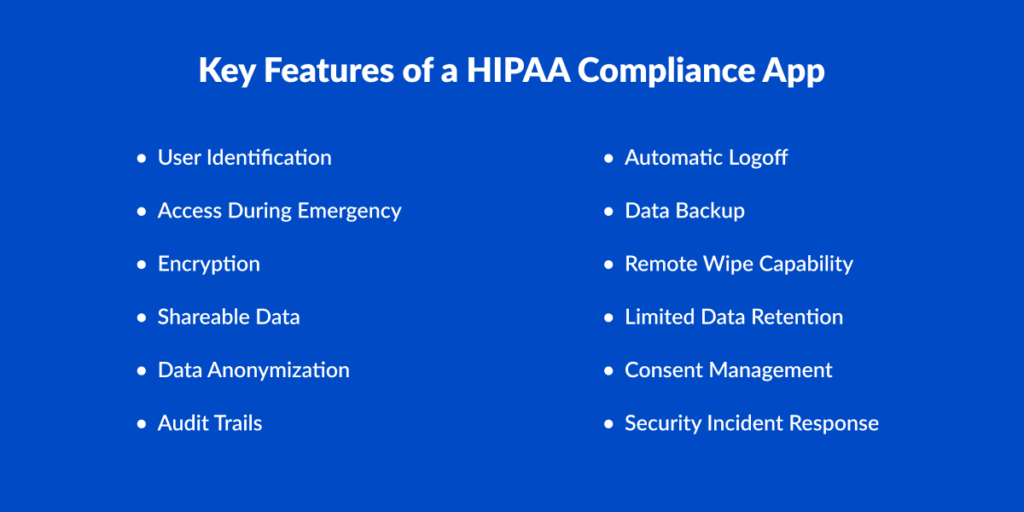
1. User Identification
Users need to verify their identity before accessing the app. This can be done using a PIN, password, fingerprint, face recognition, or smart cards. These security measures aid in preventing sensitive health information from being viewed by unauthorized individuals.
2. Access During Emergency
The app should allow access to critical healthcare services during emergencies like natural disasters or network failures. This ensures that patients and healthcare providers can stay connected when it matters the most.
3. Encryption
All data stored in the app or shared over the internet should be encrypted. While AES-256 encryption safeguards data that is retained, TLS 1.2+ secures data while it is being transmitted. Hackers find it more difficult to obtain private data as a result.
4. Shareable Data
The app should follow HL7 and FHIR standards for data sharing. This helps different healthcare systems communicate with each other securely. Patients and doctors can easily access and exchange medical records.
5. Data Anonymization
Patient data should be protected by removing or encrypting personal details. Even if someone gains access to the data, they should not be able to identify the patient. This ensures privacy and security.
6. Audit Trails
The app should keep a record of all activities related to patient data. This includes when and who accessed the data. Audit trails help in tracking unauthorized access and ensuring compliance with HIPAA rules.
7. Automatic Logoff
If a user is inactive for a certain time, the app should automatically log them out. In the event that the gadget is left unattended, this stops unwanted access.
8. Data Backup
The app should regularly save backup copies of patient data. This helps prevent data loss due to cyberattacks, technical failures, or accidental deletions. The Backups ought to be safely saved and encrypted.
9. Remote Wipe Capability
If a device containing sensitive data is lost or stolen, the app should allow administrators to erase all data remotely. This safeguards patient privacy and stops unwanted access.
10. Limited Data Retention
Only the necessary amount of time should be spent storing patient data in the app. Data should be safely erased once it is no longer required. This lowers the possibility of data breaches and guarantees adherence to HIPAA rules.
11. Consent Management
Users should have control over their data. The app should allow them to give, manage, or withdraw consent for sharing their health information. This guarantees openness and safeguards the rights of patients.
12. Security Incident Response
The app should have features to detect and respond to security threats. If any suspicious activity occurs, the system should send alerts. There should also be a clear plan to handle data breaches and minimize damage.
A healthcare app development company can integrate these features to build a HIPAA-compliant app. This ensures patient privacy, data security, and smooth healthcare services.
Technology Stack Used to Develop a HIPAA Compliant App
Choosing the right technology stack ensures data security, scalability, and HIPAA compliance.
Below is a structured overview of the recommended tech stack:
| Component | Recommended Technologies |
|---|---|
| Cloud Hosting & Infrastructure | AWS HealthLake, Google Cloud Healthcare API, Microsoft Azure Healthcare APIs, IBM Cloud for Healthcare |
| Database Management | PostgreSQL, MySQL, MongoDB Atlas, Google Firestore, Amazon RDS (HIPAA Compliant) |
| Data Encryption & Security | AES-256 (Data at rest), TLS 1.2+ (Data in transit), AWS KMS, Azure Key Vault, Google Cloud KMS |
| APIs & Interoperability | FHIR, HL7, Redox Engine, Google Cloud Healthcare API, AWS HealthLake |
| Authentication & Access Control | OAuth 2.0, OpenID Connect, SAML, Okta, Auth0, Role-Based Access Control (RBAC) |
| Secure Storage & Backup | AWS S3, Google Cloud Storage, Azure Blob Storage, Veeam, Commvault |
| Secure Communication | Twilio, Vonage, Zoom for Healthcare, Doxy.me (for HIPAA-compliant telemedicine solutions) |
| Logging & Monitoring | AWS CloudTrail, Azure Security Center, Google Cloud Audit Logs, Splunk, Datadog |
| Compliance & Risk Management | Vanta, Drata, OneTrust, IBM Guardium, HIPAA Secure Now! |
| Development Frameworks & Languages | React, Angular, Vue.js (Frontend); Node.js, Python (Django, Flask), Java (Spring Boot), .NET (Backend); Swift, Kotlin (Mobile) |
Using this tech stack ensures the cost to develop a HIPAA compliant app remains optimized while maintaining strict compliance.
A mobile app development company specializing in teleradiology app development and healthcare solutions can help integrate these technologies efficiently.
HIPAA Compliance for AI Applications in Healthcare Sector
AI is transforming healthcare, but it does not automatically comply with HIPAA regulations. AI systems handle large amounts of sensitive patient data, which must be protected.
Developers and AI vendors working with protected health information (PHI) must follow HIPAA guidelines. If they process PHI for healthcare providers, they become business associates under HIPAA.
There are key risks when using AI in HIPAA-compliant app development. AI models require vast amounts of data, which can be difficult to de-identify or encrypt.
Many AI systems operate as “black boxes,” making it hard to track how they process patient data. This can create transparency issues.
AI solutions often involve third-party providers, which means extra compliance steps, such as signing Business Associate Agreements (BAAs) and ensuring vendors follow HIPAA rules.
To minimize AI risks and maintain HIPAA compliance, developers should:
- Anonymize patient data before using it in AI models.
- Implement strict data governance policies.
- Work only with AI providers willing to sign a BAA.
- Use encryption and strong access control (IAM policies).
By following these steps, healthcare companies can leverage AI while ensuring compliance and data security.
How to Become HIPAA-compliant with Developer Bazaar?
If you are looking for HIPAA Compliant App Development in 2025, Developers Bazaar can help. We specialize in medical app development and ensure that your healthcare app meets all HIPAA security requirements.
Our team follows the latest HIPAA guidelines and builds AI-driven healthcare applications with proper encryption, data privacy, and access control. Whether you need a fully developed HIPAA-compliant app or support for your in-house team, we have the expertise.
Conclusion
HIPAA was developed to protect patient privacy and secure healthcare applications, systems, and businesses. Any app that handles protected health information (PHI) must follow HIPAA guidelines strictly.
Failure to comply can lead to heavy penalties, ranging from thousands to millions of dollars, depending on the size of the data breach.
To build a HIPAA-compliant app, developers must follow security measures such as encryption, authentication, data access controls, and audit logging. Proper implementation of HIPAA compliances in app development ensures a secure and trustworthy platform for both patients and healthcare providers.
A professional healthcare app development company can help in creating a secure and fully compliant application. By following all HIPAA procedures, businesses can protect sensitive data, avoid legal issues, and provide better healthcare services.
FAQs
1. Is there any certification required to build a HIPAA-secure app?
A: No official certification is required for HIPAA-compliant app development. However, developers must ensure the app meets all security and privacy regulations outlined in HIPAA. Third-party audits can help verify compliance.
2. How to make an app HIPAA compliant?
A: To build a HIPAA-compliant app, developers must implement strong security measures. This includes encryption, user authentication, access control, data backup, and regular security audits. Following these steps helps in protecting patient data.
3. Which healthcare apps need to comply with HIPAA regulations?
A: Any app that stores, processes, or transmits protected health information (PHI) must follow HIPAA compliances in app development. This includes telemedicine apps, electronic health record (EHR) systems, appointment scheduling apps, and remote patient monitoring apps.
4. Can cloud-based healthcare apps be HIPAA compliant?
A: Yes, cloud-based apps can be HIPAA compliant if they follow strict security protocols. A mobile app development company must ensure the cloud service provider follows HIPAA rules, such as data encryption, secure backups, and access control.
5. What are the consequences of non-compliance with HIPAA regulations?
A: Failing to comply with HIPAA can lead to serious legal consequences. Businesses may face heavy fines, legal action, and reputational damage. The penalties can range from thousands to millions of dollars, depending on the severity of the violation.

RM Mishra
Co-Founder
Developer Bazaar technologies







